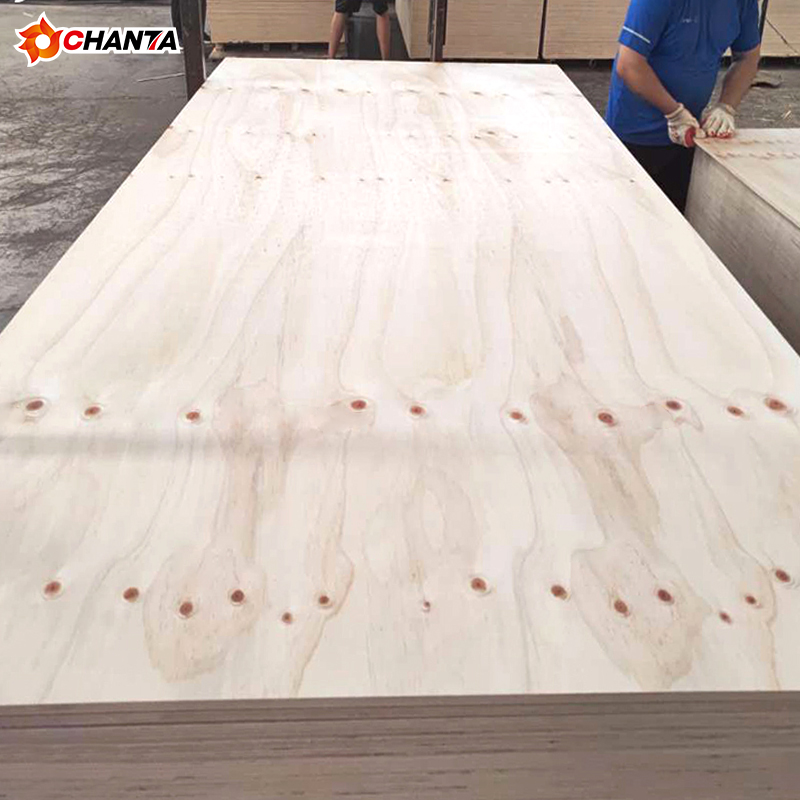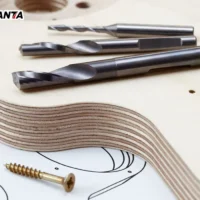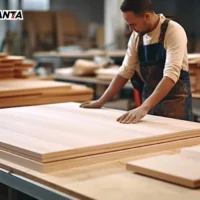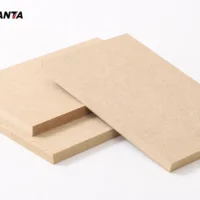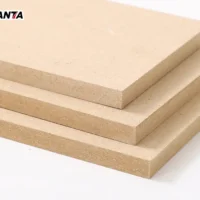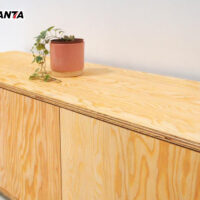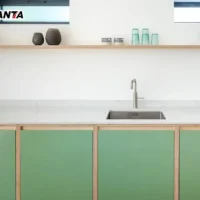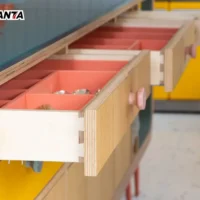Natural wood veneer refers to thin slices of solid wood, commonly used in furniture, construction, and decoration. These sheets, also known simply as “veneer,” provide the visual appeal of natural wood at a fraction of the cost. Two main production methods—rotary cutting and slicing—yield veneers with distinct looks and textures. In this article, we’ll explore the production methods, types of natural wood veneer, and common uses to help you understand its value and versatility.
Rotary Veneer
Rotary veneer is a type of wood veneer made by rotary cutting. In this process, logs are placed on a rotating platform, and a blade peels a continuous sheet from the log’s outer edge. This method produces a long, ribbon-like sheet with a bold, varied grain pattern, making rotary veneer unique in appearance. Here’s a brief look at how it’s made:
- Log Preparation: Selected logs, chosen for their species, size, and quality, are debarked to remove the outer layer.
- Mounting the Log: The log is positioned horizontally on a lathe, rotating against a stationary blade.
- Rotary Cutting: As the log turns, a continuous veneer sheet is peeled from its surface.
- Drying: Fresh veneer sheets are dried to reduce moisture and prevent warping.
- Grading: Veneer sheets are then graded for quality, thickness, and visual appeal.
Rotary-cut veneer is often used in plywood manufacturing, where sheets are layered with alternating grain directions. This construction adds strength and stability, making plywood ideal for various structural applications.
Sliced Veneer
Sliced veneer is another method for producing wood veneer, but instead of peeling the veneer off in a spiral, it is cut in sheets. This method results in a more consistent grain pattern, making it popular for high-quality, decorative applications. The process involves several steps:
- Log Selection and Preparation: Logs, selected for species and appearance, are debarked and sometimes pre-steamed to ease slicing.
- Slicing: Logs are placed on a slicing machine, where thin sheets are cut like slices of bread. Techniques such as flat-slicing, quarter-slicing, and rift-cutting are used to produce different grain patterns.
- Drying: Sliced veneer sheets are dried to lower moisture content, ensuring stability and reducing the risk of warping.
- Grading: Each sheet is evaluated for its color, grain pattern, and overall quality.
- Matching and Assembly: Veneer sheets are matched to create larger panels, using methods like book matching or slip matching to achieve visually appealing patterns.
Sliced veneer is often chosen for furniture, cabinetry, and paneling due to its attractive grain and refined look. Its consistent grain pattern also allows for greater control over a piece’s appearance, making it a favorite for decorative finishes.
Common Applications of Natural Wood Veneer
Natural wood veneer is prized for its versatility and natural appearance, and it finds use in a wide range of applications:
1. Decorative Interiors
Natural wood veneer adds warmth and character to interior spaces. It is often used on walls, floors, and ceilings, as well as on decorative surfaces like wall panels and trim. The natural grain of the veneer enhances a room’s aesthetic, providing an organic look.
2. Furniture Making
Wood veneer is frequently used in furniture, giving pieces the look of solid wood while improving stability. High-quality furniture such as tables, chairs, and cabinets often feature natural wood veneer for a fine, polished finish. This application also allows furniture makers to achieve a luxurious look without using solid hardwood, which is more expensive.
3. Construction
In construction, wood veneer can be applied to structural elements like walls and ceilings, bringing natural beauty to buildings. Veneer adds visual appeal to architectural features while keeping material costs lower than using solid wood. Plywood, which often incorporates rotary veneer layers, is commonly used in construction due to its strength.
4. Arts and Crafts
Natural wood veneer is also popular in arts and crafts projects. Woodworkers and artists use veneer in wood carvings, collages, and custom designs, appreciating its unique grain patterns and range of colors. Veneer’s thin, flexible sheets make it ideal for creating intricate designs and adding wood accents to artistic projects.
Final Thoughts on Natural Wood Veneer
Natural wood veneer combines aesthetic appeal with practicality, offering the look and warmth of solid wood in a more accessible form. Whether produced through rotary cutting or slicing, veneers provide unique textures and patterns that suit a wide range of applications, from furniture and construction to decorative art. With its natural beauty and versatility, wood veneer remains a valuable material for designers, builders, and craftsmen alike.














